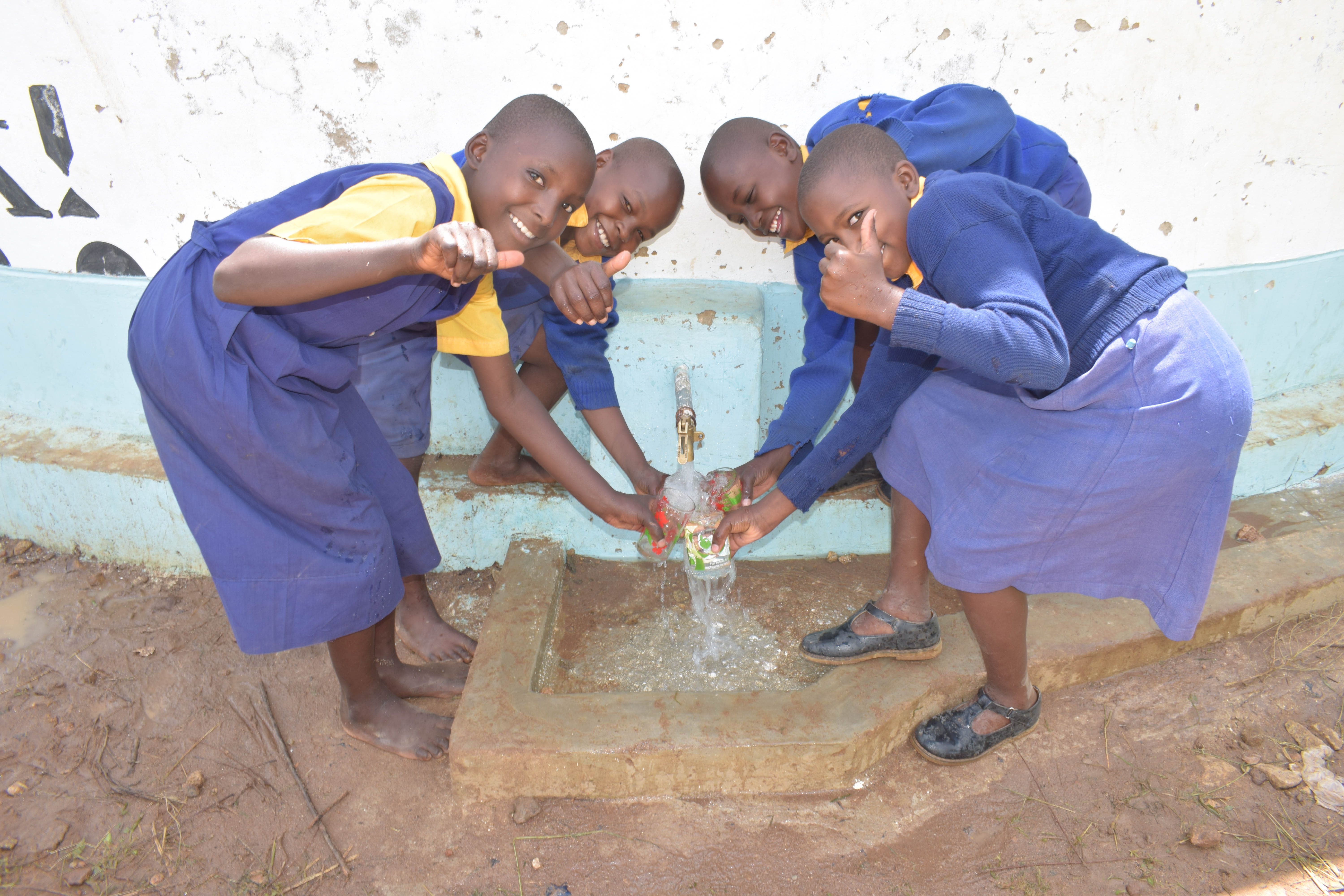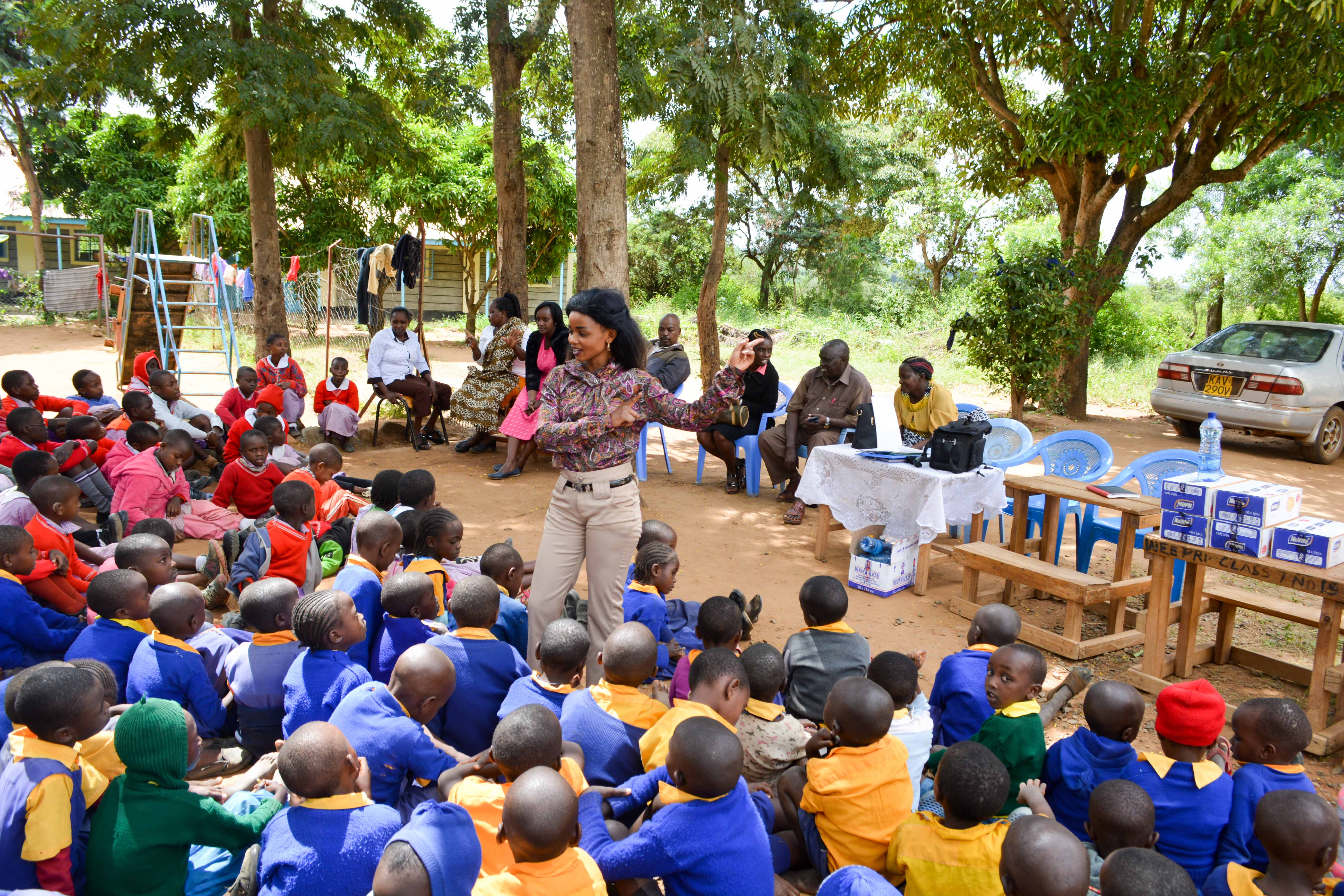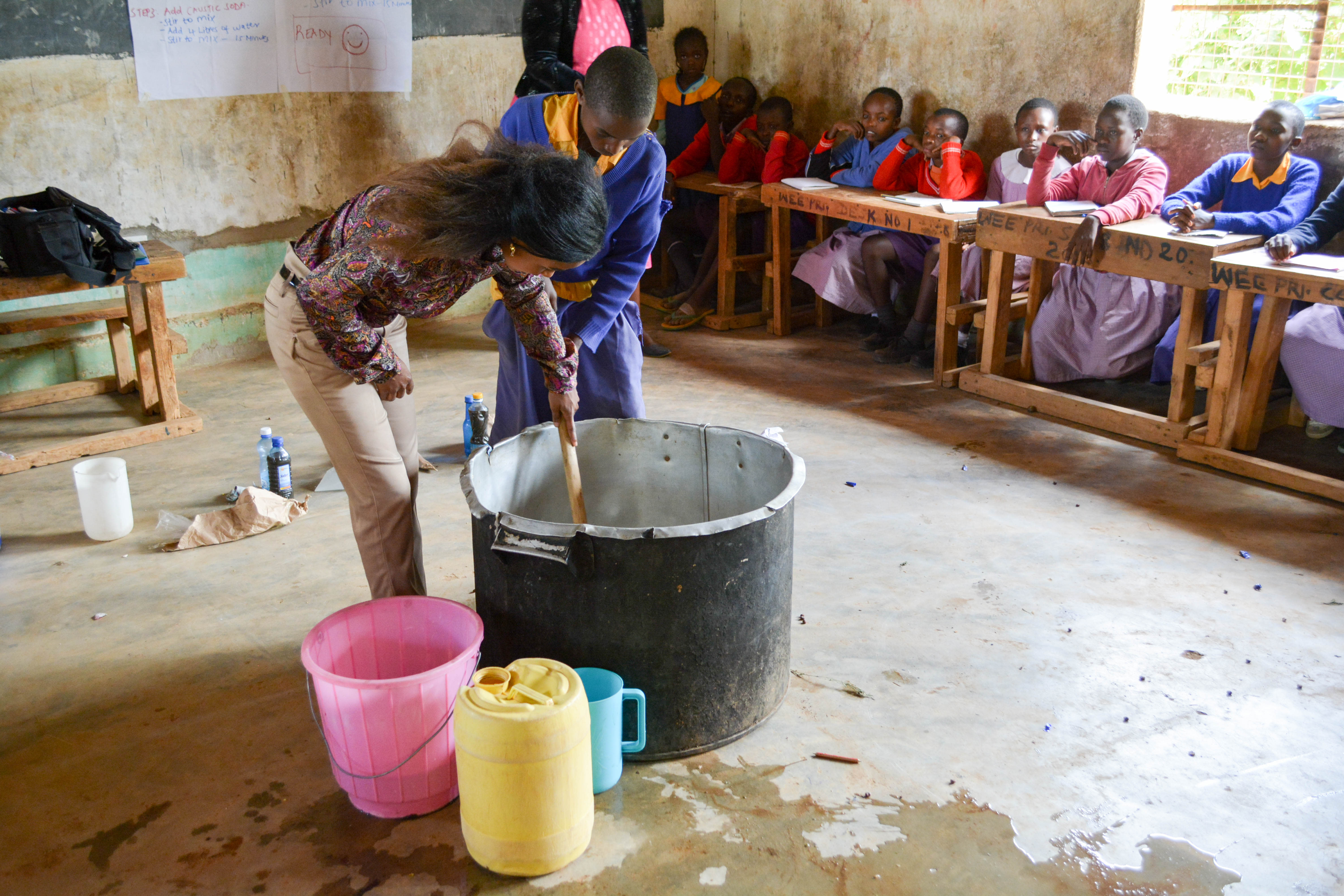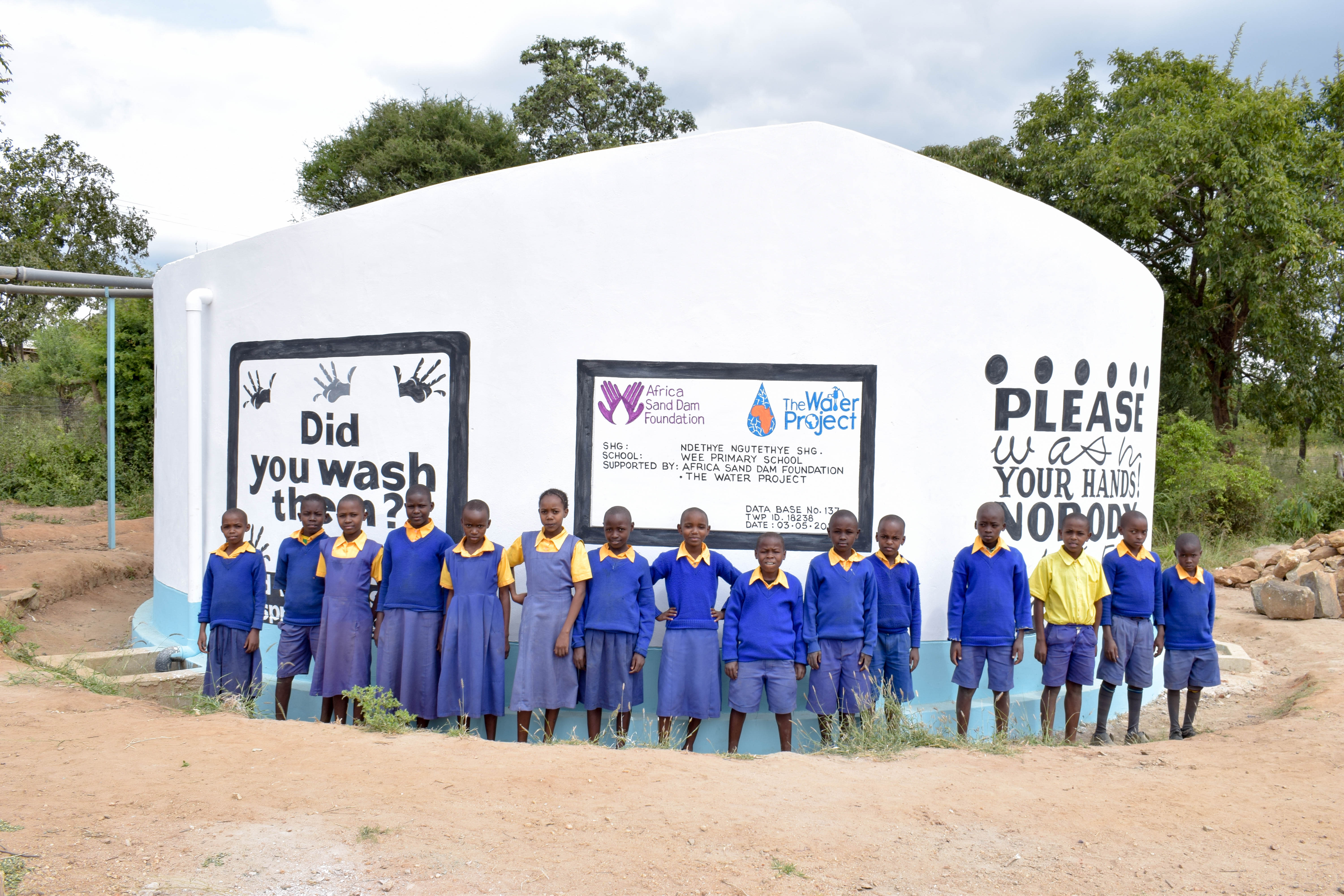Inconsistent water access at Wee Primary School comes with a cost - 200 shillings ($2) spent each day to have water brought by motorbike to the school. The school has piped water, but that does not usually work. The concrete tank constructed year ago for rainwater no longer works, and the two small plastic tanks cannot store enough water for the students and staff.
Due to the scarcity of water in the school, the latrines are rarely washed.
"The school is trying its best based on the washing and cleaning conditions. The pupils had functional taps for handwashing but they keep destroying them so they are usually encouraged to carry water for washing their hands," Deputy Headteacher Mrs. Lidia Kitui explained.
Access to clean water is vital to the school. Students bring water collected from contaminated sources in plastic containers to help alleviate the problem. But that unsafe water contributes to the proliferation of waterborne diseases among the student population.
"The standards of cleanliness and sanitation can be improved with the availability of more water in the school," Mrs. Kitui said.
"A quarter of the pupils come to school barefoot and going to the latrine barefoot is not very healthy especially with the conditions of some of our latrines."
The school was started by the Makueni District Education Board in collaboration with the local members in 1974. It has progressed over the years first grade to eighth grade.
On a normal school day, the students are expected to arrive at 6:30am. Morning studies run until 7:30 then perform followed by cleaning duties up to 8:00. Their lessons which usually last for 35 minute periods running until 3:10pm followed by games and other activities until 4pm. The students remain for another hour to study and head for home by 5pm.
Here’s what we’re going to do about it:
Training
Students and staff will be trained on hygiene and sanitation. Those in attendance will form a school health club that will promote good hygiene and sanitation practices both at school and at home. They will learn all the steps of proper hand-washing, how to treat water, and how to keep their environment clean. The school will also be taught how to best oversee and maintain their new rainwater catchment tank and hand-washing stations.
Handwashing Stations
Three handwashing stations will be delivered at the project’s completion. These are 1,000-liter plastic tanks fitted with four taps. The health club and school management will be responsible for making sure tanks are filled with water and that a cleaning agent such as soap or ash is available.
Rainwater Catchment Tank
We will build a 104,000-liter rainwater catchment tank for this school. Its clean water will benefit the students, teachers, and supplementary staff. Parents will mobilize the materials needed for construction, such as sand and stone and also lend some strong arms to help with the actual construction.
As soon as the tank has time to cure, it can begin to collect rainwater for drinking, cooking, and cleaning! 104,000 liters of water will keep students and staff in class and focused on learning.
This project is a part of our shared program with Africa Sand Dam Foundation. Our team is pleased to provide the reports for this project (edited for readability) thanks to the hard work of our friends in Kenya.

 Rainwater Catchment
Rainwater Catchment
 Rehabilitation Project
Rehabilitation Project
































